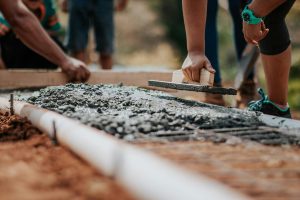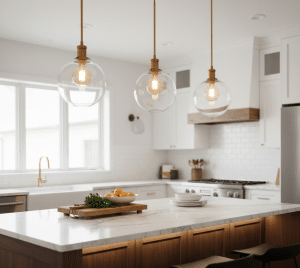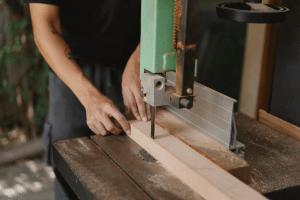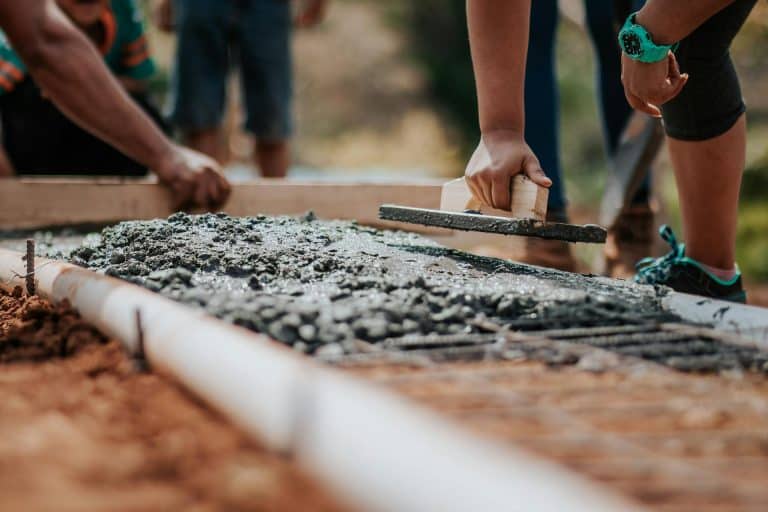A kitchen works harder than any other area of your home. Moreover, every heavy cabinet, large appliance, and rigid flooring material depends on a flat and stable subfloor. When the floor isn’t level, or at least properly flat, problems soon appear, like gaps forming under cabinets and wobbly appliances. In addition, tiles may crack, or the entire surface may slope more than it should. Many homeowners feel confused and wonder if the floor must be perfectly level or simply flat. However, the goal is clear. Your subfloor must be flat enough for a safe and stable installation.
These uneven flooring concerns are common and come from high or low spots, structural problems, or choosing the wrong leveling method. Each of these has a simple and direct solution.
How to Level up Your Kitchen Floor:
- Check high and low spots with a long level or laser.
- Check whether the slope is structural or surface-level.
- Fix high spots by sanding or grinding.
- Fill low spots with the right leveling material.
- Recheck flatness before cabinets or flooring go in.
The post explains each subfloor leveling step so you get a flat kitchen floor, better flooring performance, and fewer future headaches.
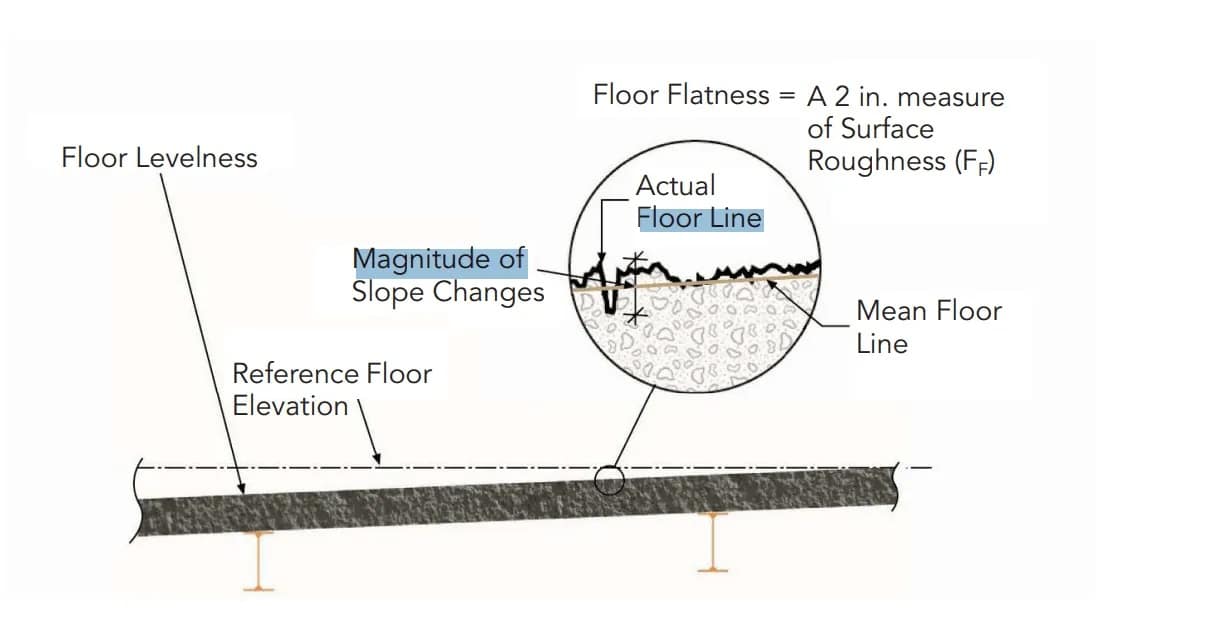
Image Source: aisc.org
Why You Should Level a Kitchen Floor Before Installing Flooring
A level kitchen floor makes the entire space work smoothly. Additionally, it keeps every key element stable.
- Cabinet Stability to ensure cabinets sit straight and align properly.
- Better appliance function by preventing wobbly fridges, ovens, and dishwashers.
- Flooring longevity that reduces cracking, warping, or popping of tiles and boards.
- Minimizes tripping hazards caused by uneven surfaces.
- Water drainage to ensure that the water does not pool in low areas, which leads to damage.
- Provides a smooth and even appearance to the whole kitchen for a professional finish.
Well, a flat floor sets the foundation for any style, from modern to farmhouse, especially if your goal is to create a classic kitchen look with clean lines and balanced design.
1. Assess Your Current Floor Condition
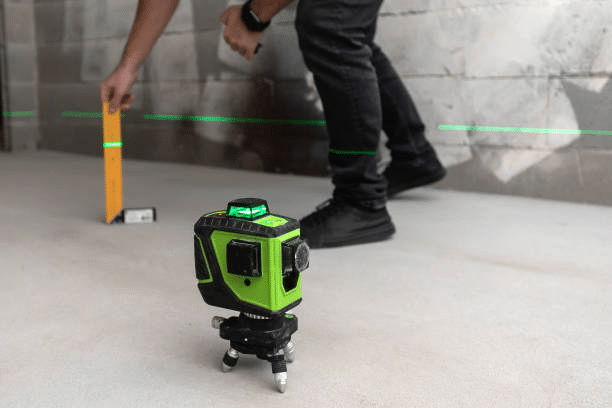
The very first thing you have to do is to know the condition of your floor.
To do so, you can take a laser level or a long straightedge to determine high spots and low spots. Inspect the kitchen floor across multiple areas to determine where dips or slopes occur.
The majority of flooring manufacturers suggest that maximum variation should not exceed 3/16 inch beyond 10 feet, but tile and other hard materials can have even stricter tolerances.
The cause of the unevenness should also be determined. The source of some of the problems is the subfloor itself, and others are structural issues such as sagging joists or settling.
Sistering joists may be necessary to take care of the structural problems, repairing joists, or even dealing with foundation settlement, before you do the leveling.
2. Preparing the Kitchen Floor for Leveling
The perfect subfloor leveling results are due to proper preparation.
- Clean out the room by clearing off cabinets, fixtures, and isolating the appliances.
- Coat the existing finishes to prevent damage in the process.
- Next, clean the sub-floor thoroughly. Remove all dust, debris, and grease, particularly from concrete surfaces, to ensure good adhesion of leveling compounds or underlayment.
- Finally, secure any loose sub-flooring. Screw down squeaky boards and fix any joist issues.
A clean, prepared, and stable floor will guarantee your desired flooring, may it be tile, hardwood, or laminate, is flat, professional, and longer lasting.
3. Tools & Materials You’ll Need
A kitchen subfloor needs the proper tools and materials to level it properly.
- Laser levels, long straightedges, and chalk lines can define high and low spots effectively.
- High spots are removed with grinding or sanding tools, and low points are filled with self-leveling compounds or underlayment sheets to produce a smooth base.
- Always adhere to the flooring manufacturer’s flatness specifications.
Such as tile, tile requires a greater amount of flatness compared to floating vinyl or laminate. These are the tolerances to be confirmed before you select your leveling method.
It is important to use the right tools and materials in order to install flooring that works, avoids destruction in the future, and holds the cabinets and appliances firmly in place over the next few years.
4. Dealing with High Spots & Low Spots
Before dealing with the spots, you need to decide the right leveling method according to the floor type, material, and degree of unevenness..
For minor low spots:
- Use patching compounds or thin-set leveling mixes to fill small dips.
- Ideal for areas under cabinets or where floating floors will be installed.
For moderate to large uneven areas:
Self-leveling compounds work well for both wood and concrete subfloors. They flow into low spots and create a smooth, flat surface. Follow manufacturer guidelines for mixing, drying time, and maximum depth.
For structural or localized low spots on joisted floors:
Add plywood underlayment or place shims under the subfloor. These methods support cabinets and heavy appliances and give you a flat surface ready for installation.
For high spots:
- Sanding, planing, or grinding wood subfloors.
- Concrete grinders for concrete surfaces.
These simple steps correct both high and low spots and give you the flat base your flooring requires.
5. Transitioning Between Flooring Heights
During remodels, kitchen floors often sit higher or lower than nearby rooms. Smooth transitions protect both safety and appearance.
- First, use metal, wood, or rubber transition strips to bridge the height difference.
- Then, for small differences under 1/4 inch, feather leveling or patch compounds are used to create a gentle slope.
- You can also add or remove plywood or underlayment layers. This method works well for tile, hardwood, laminate, and vinyl.
- Always follow the manufacturer’s flatness requirements at transitions. Tile needs the most precision because it cannot flex. Floating floors can handle small changes, but gradual slopes still prevent gaps or buckling.
The right transition methods help you to create a smooth, safe, and attractive flow between rooms. Additionally, you keep cabinets, flooring, and appliances aligned and stable.
5. Final Check & Verification
After learning to level high and low spots, you should ensure that the floor is indeed flat and is ready to install. Begin by rechecking the level of the floor in several directions, length and width, and diagonally. By doing this, you can detect any remaining dips or bumps.
When you achieve flat, stable, and fully prepared, you’re now ready to choose the best flooring for your kitchen. For the kitchen flooring, consider durability, moisture resistance, and maintenance requirements to match your cooking and lifestyle needs.
A leveling floor, together with the appropriate material, will create a safe, functional, and beautiful kitchen over the years.
Conclusion
Whatever subfloor you are dealing with, concrete, plywood, or a wooden one, these steps discussed above will save you time and costly repairs in the future.
Still, some people thought it was not necessary to have a level surface before floor installation, but to avoid future risk, you just need to address every concern related to the subfloor because it is the base of a perfect kitchen floor.







